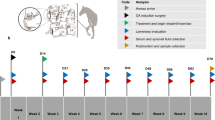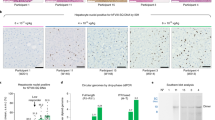Abstract
A recombinant adeno-associated virus (rAAV) vector carrying the human factor IX cDNA was tested for safety and therapeutic gene expression in a canine model of human hemophilia B. Intramuscular delivery of rAAV was chosen based on our previous work which described long-term (>1.5 years) reporter gene expression in immunocompetent mice following direct muscle injection. For the current study, rAAV with the human factor IX (hF.IX) cDNA under the control of the cytomegalovirus (CMV) immediate–early promoter was constructed, and rAAV/hF.IX proved capable of transducing hemophilic dog primary fibroblast cultures in a dose-dependent fashion. Direct intramuscular injection of 2.5 × 1012 rAAV/hF.IX virus particles into the hindlimbs of a hemophilia B dog was tolerated without bleeding or systemic reaction, and the animal was asymptomatic throughout the entire study. Transient reduction in the whole blood clotting time (WBCT) occurred during the first week, with the anticipated development of an antihuman F.IX inhibitor antibody which corresponded with the loss of coagulation correction. At 10 weeks after vector administration, immunohistochemical analysis of injected muscle confirmed continued hF.IX expression. Limited areas of focal lymphocytic infiltration and myofiber pathology were detected which directly correlated with positive antibody staining for helper adenovirus contamination. PCR tissue analysis revealed rAAV/hF.IX DNA solely in injected muscle tissue and adjacent lymph node, without dissemination to other organs (including gonads). This first large animal study suggests that intramuscular gene delivery using rAAV vectors is safe and supports continued development of this approach for gene therapy of human diseases, including hemophilia B.
This is a preview of subscription content, access via your institution
Access options
Subscribe to this journal
Receive 12 print issues and online access
$259.00 per year
only $21.58 per issue
Buy this article
- Purchase on Springer Link
- Instant access to full article PDF
Prices may be subject to local taxes which are calculated during checkout
Similar content being viewed by others
Author information
Authors and Affiliations
Rights and permissions
About this article
Cite this article
Monahan, P., Samulski, R., Tazelaar, J. et al. Direct intramuscular injection with recombinant AAV vectors results in sustained expression in a dog model of hemophilia. Gene Ther 5, 40–49 (1998). https://doi.org/10.1038/sj.gt.3300548
Received:
Accepted:
Published:
Issue Date:
DOI: https://doi.org/10.1038/sj.gt.3300548



